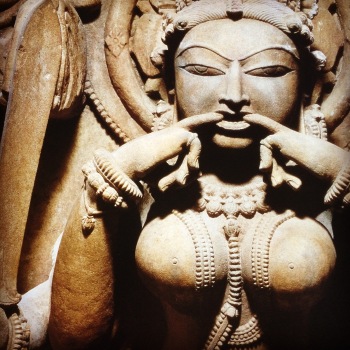
June McDaniel’s The Madness of Saints: Ecstatic Religion in Bengal gives a detailed explanation of the contrast between the traditional and formal approach of the right hand path, and the truly bacchanalian and chaotic spontanaity of the left hand:
The path of progression is associated with Jame’s lysis or gradual approach. It emphasizes order and harmony, and the divine is reached by self-control and obedience. The god is most present in the greatest purity — of self, of place, of statue. Such purity involved loyalty to lineage and tradition, acceptance of hierarchy and authority, and ritual worship and practice. Ecstasy is attained by faith and learning, by acceptance of dharma, and avoidance of siddhis (powers) and self-glorification. Such a path is yogic and devotional, and called in Bengal sastriya dharma, the path of scriptural injunctions.
The path of breakthrough is associated with Jame’s crisis, or abrupt change. It emphasizes chaos and passion, and the divine is reached by unpredictable visions and revelations. The presence of deity is not determined by ritual purity — the god may be found in pure situations, but also at the burning ground, at the toilet, in blood and sexuality, in possessions and ordeals. Initiation and lineage do not determine experience — often there is a “jumping” of gurus — where different gurus are followed at different times. The criterion of status is neither yogic knowledge nor ritual skill, bur rather bhava, the ecstatic state that comes with experience of the divine. Such states are called sahaja (natural and spontaneous) or svabhavika (unique to particular individual). The path is more generally called asastriya, or not according to the scriptures.
While these two general approaches apply to the work as a whole, it is also interesting to note that in the tantrik sadhana and specifically with the ritual of panchatattva, both are combined. There is a lineage of instruction and ritual technique, which if persisted in deeply will transform into spontaneity and unpredictability. In this sense, the tantras have encoded into them the essence of developing spontaneous creativity as well as providing the means to forge the link to the true Guru. Tantra, followed sincerely and with all that one is, is a fast and direct path of realization that is unique to every person, while still growing out of known forms and traditions of lineage.

One thought on “chaos and passion”